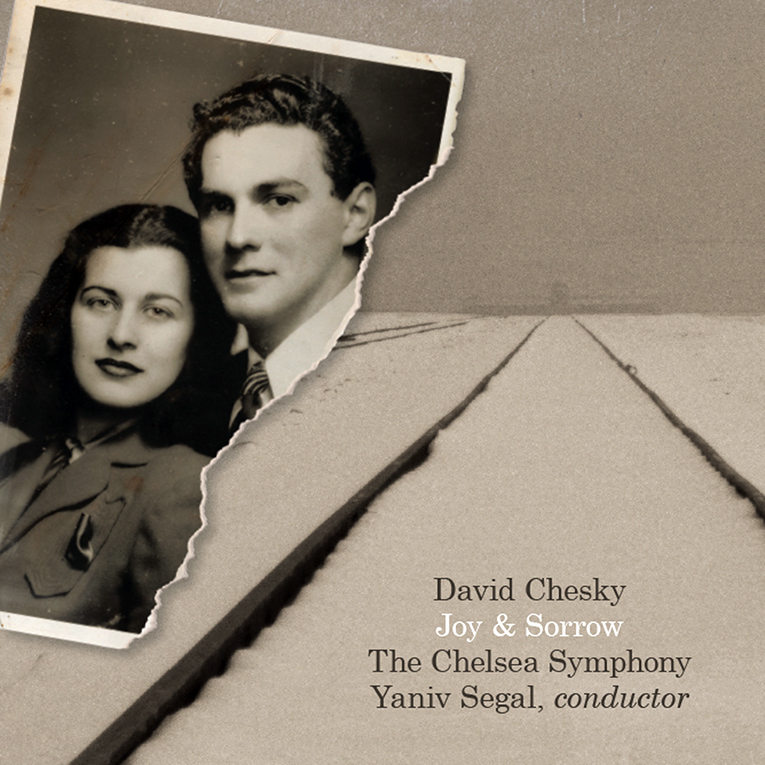Chesky JD371
Format: 24-bit/192kHz download
Music: 









Sound: 









Overall: 









David Chesky is a jazz musician, a classical composer, a record producer and engineer, and, with his brother Norman, owner of one of the most revered jazz labels around: Chesky Records. With Chesky’s Binaural+ format, recorded using a dummy head with microphones inserted in its ear canals, he’s also the world’s most prominent producer of recordings made especially for headphones. This Binaural+ recording of original compositions pays tribute to the Jewish experience, bright and dark. The excellent chamber orchestra is the Chelsea Symphony, conducted by Yaniv Segal, and the two superb instrumental soloists -- violinist Artur Kaganovsky and cellist Kristina Reiko Cooper -- are drawn from its ranks.
The brighter selections fuse elements of klezmer and Roma music with bits of flamenco and jazz. The first track, “Dora’s Dance,” and the Concerto for Violin and Orchestra No.3 bounce along happily in full klezmer mode. It’s difficult to keep from tapping one’s foot or finger through these merry, rhythmically crazed dances, though the concerto’s middle movement is more measured, piquant, and stylized.
“Betty’s March” and “The Fiddle Maker” remind me of a town band and village life, the march sounding much like the sort of music heard in The Godfather II. The measured beginning explodes into virtuoso rips from various instruments of the orchestra: strings, clarinet, trumpet, and percussion.
The darker side of Jewish life and death was inspired by Chesky’s visit to Auschwitz and some of the Nazis’ other death camps. The Wiener Psalm (The Vienna Psalm), based on Psalm 38 and other texts, is a lament sung in Hebrew for bass and orchestra (four additional basses enter toward the end). After a mournful introduction, the bass, the sonorous Ethan Herschenfeld, enters in a cantorial manner that vacillates between pleading and assertiveness. In Arbeit Macht Frei, for solo cello and orchestra, Chesky tries to express in music what it was like to enter one of the death camps as an orchestra of inmates played. The title is taken from the slogan cast in iron over the gates of many of the camps: “Work sets you free.”
As much as I’ve enjoyed Chesky’s Binaural+ recordings of jazz and folk ensembles, I wondered how it would work with larger ensembles that can’t be easily moved around the dummy-head microphones. The Chelsea Symphony, numbering 28 players at full strength, was arranged with violins to the left, cellos and basses to the right, percussion mostly to the left and center, and clarinet and trumpet in the center slightly behind the strings. There was no manipulation after the recording began; any adjustments had to be made before recording started, by moving players around. I saw in a short promotional video that clarinetist Moran Katz spent most of the session standing. At the 3:00 mark in that video, you can see the dummy head at the center, just in front of the conductor’s podium.
The recording took place at the German Lutheran Church of St. Paul, in New York City. Though less sonorous than the Hirsch Center, Chesky Records’ usual recording venue, it apparently has plenty of natural warmth and a large amount of reverberation.

Not surprisingly, given the arrangement, the sound through headphones is close-up -- a conductor’s-ear view. I’ve conducted an orchestra, and I like this sort of sound. I’m sure it will appeal to anyone who likes to sit in the first few rows at a concert, though those who prefer to sit farther back or in the balcony might find the sound a bit too aggressive. Also, the musicians toward the front of the orchestra are louder than those in the rear. This isn’t an error -- it merely reflects the realism of the recording. Some folks might prefer the more blended sound you hear in row 10 or 20. We’re in the early stages of a revival of binaural recording, driven by the recent resurgence in popularity of headphones; I expect any issues will be resolved as the technique grows and develops.
This recording can also be listened to through speakers -- Chesky’s Binaural+ discs are engineered to sound good that way, too. But through headphones, the texture, definition, warmth, and instrumental placement in this recording are darned near astounding. The quality and sound of each instrument or orchestral section is absolutely natural, and the recording has a you-are-there presence. With no dynamic-range compression or tweaking of equalization, the sound seems entirely in the hands of the musicians.
I like David Chesky’s music, and his style of recording with a binaural microphone. I hope there will be more binaural recordings -- of full orchestra, pipe organ, perhaps even a Broadway show. Keep lobbying your favorite record labels. If they know you want it, perhaps they’ll make it.
Joy & Sorrow is also available on CD as Chesky JD371, with copious program notes.
. . . Rad Bennett







